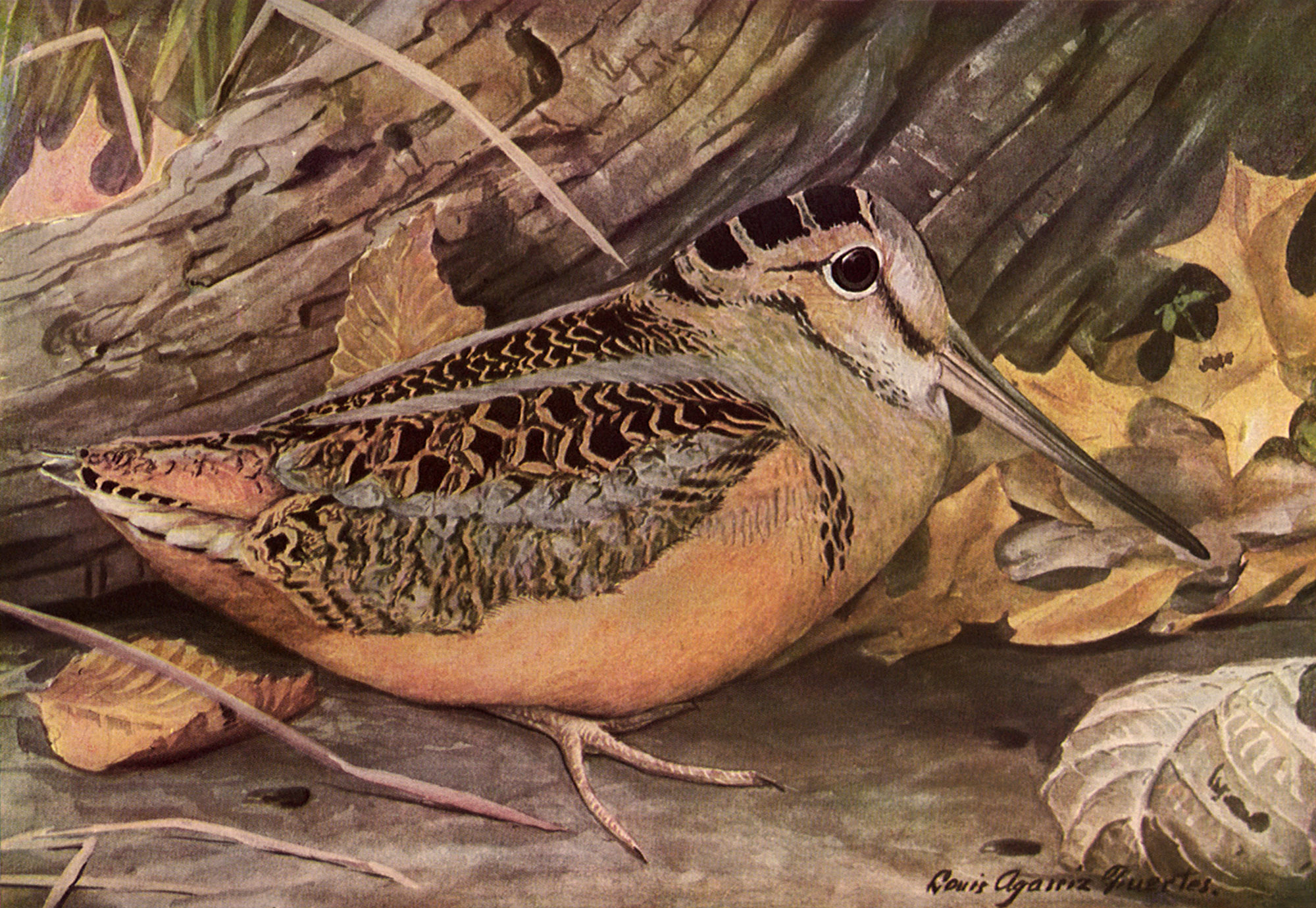AS I WAS DOZING over the Sunday paper, in that blissful state of semiconsciousness that follows an active day and a good dinner, the phone rang. A brisk feminine voice wanted to know if this was my residence. I assured her that it was, and she said: “Hold the line, please. Ellsworth is calling.”
Now who the devil do I know in Ellsworth, I wondered. Then a drawling voice said: “Hello, Hank, is that you? This is Raymond. Say, listen, if you want some of that woodcock shooting we were talking about last summer, you better get down here tomorrow. I just came in off the Air Line Road, and I saw three flights in less than an hour. They’re moving on the full of the moon, and the covers will be full of birds in the morning. How early can you get down here?”
I knew then who was talking and what he was talking about. I recalled an argument we had had early in the summer and some rash predictions that Raymond had made at the time. He had promised to show me some heavy woodcock flights, and now, it seemed, he was ready to make good. I made some hasty mental calculations before replying.
“Well, let’s see,” I answered. “Sunrise is about quarter past 6. I can get hold of someone at the airport and have the plane left out tonight. I ought to get away by 6:30, and that should get me to Trenton by 8 o’clock. I think it’s about 110 miles.”
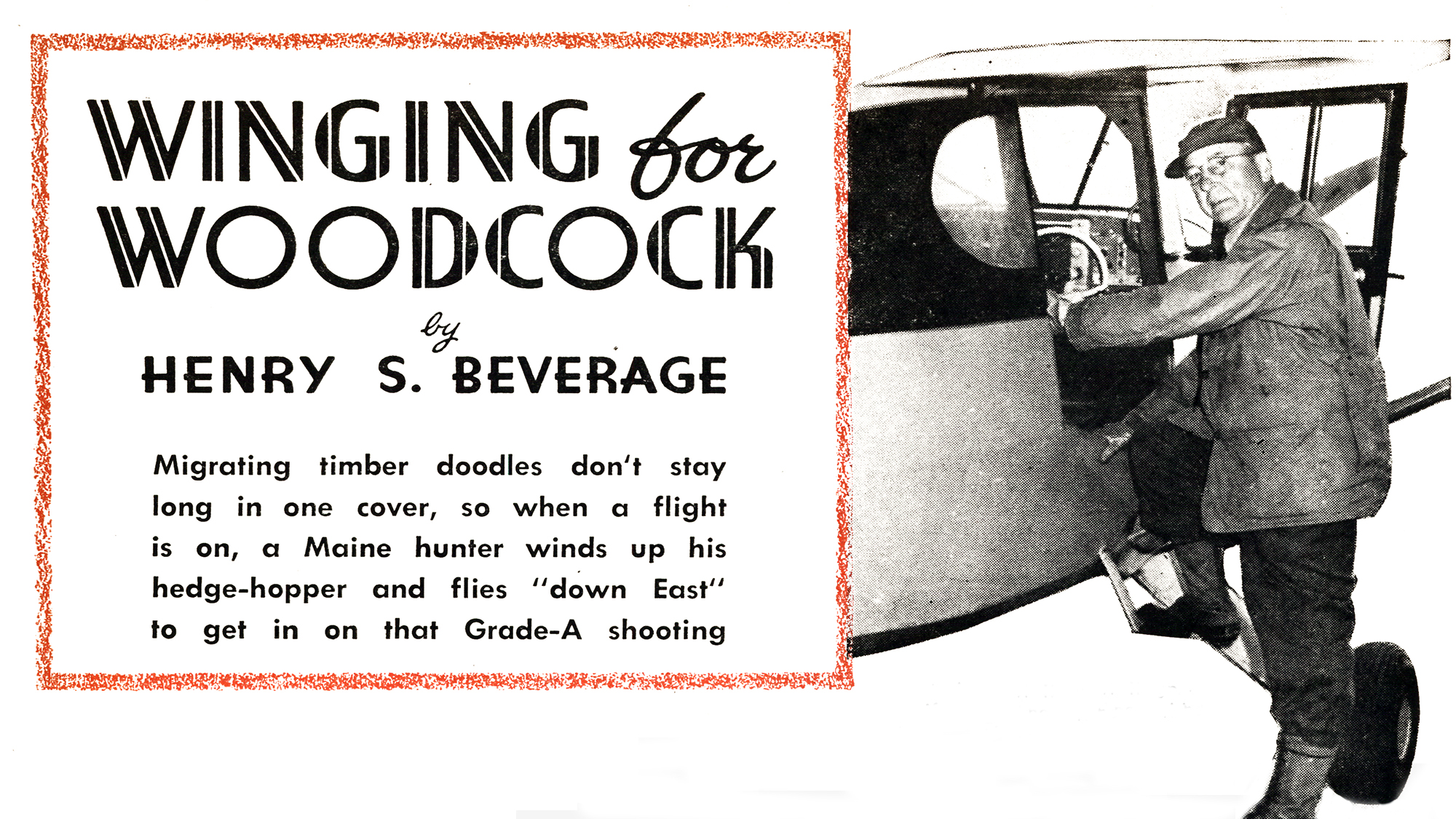
“That’ll be soon enough. Arthur don’t like to get up too early, anyway. And say, you better bring plenty of shells—you’re going to see a lot of woodcock,” he promised.
I got in touch with Ed at the field and told him to tie the Voyager down outside so I could get it early in the morning. Then I called the Weather Bureau. I was told I could expect an ideal day.
While I was laying out shells, clothing, camera, and film for easy collection in the morning, I reviewed our discussion about flight woodcock which had resulted in Raymond’s phone call. I remembered that we had been comparing experiences when he had said: “Why don’t you come down East next fall and get some real shooting? I’ll phone you when there’s a flight on, and you can wind up that hedge-hopper of yours and be down there in an hour.”
“SORT OF an interception flight to bust up a night invasion,” I’d observed. “Well, it sounds easy. The only trouble is, we both know there isn’t one chance in a hundred of forecasting a flight that close. Sure, I’ve hit flights, and I expect to again. I’ve seen the birds so thick in the alders that the dog nearly went crazy. I’ve stood almost in my tracks and shot the limit of four, and I’ve seen the spaniels get up two and three woodcock at a time. But no one ever told me beforehand when those things were going to happen.”
“Well, you city fellows who hunt those little half-acre covers can’t be expected to know much about woodcock. Come down East where we raise ’em, and you may learn something. I’ll call you next fall when the flight is on,” Raymond drawled.
It was true that I had never hunted woodcock much beyond the limits of my own Maine neighborhood. I didn’t have to. I could leave the house at daybreak, hunt one or two small covers, and get to my office by 9 o’clock. Usually I’d get a couple birds, not infrequently the limit of four.
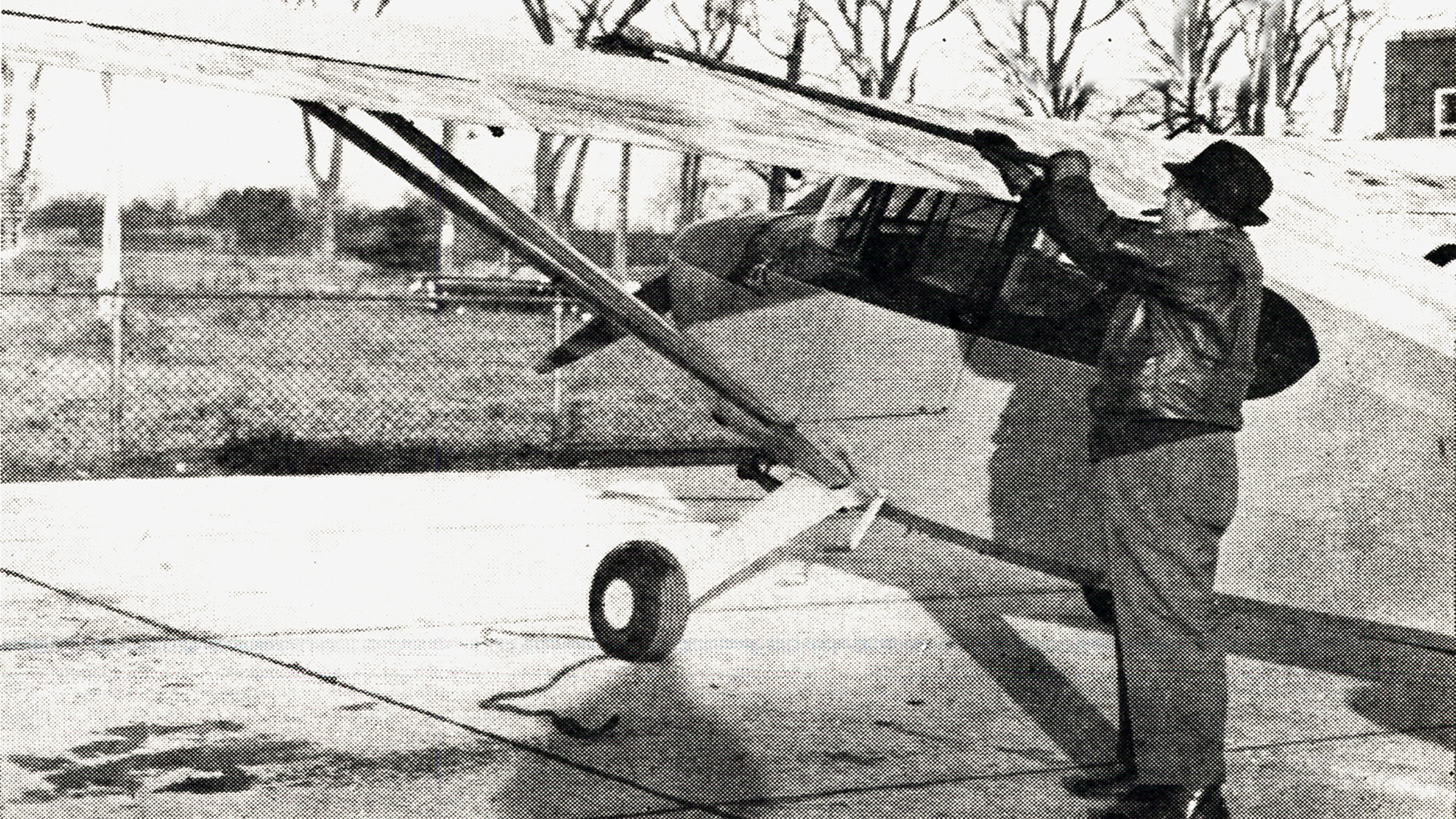
It just happens that I live in good woodcock country and can hunt as often as I wish during the season. The distant covers had never attracted me. I couldn’t see putting in two or three days, more than half of which would be travel time, to shoot four woodcock when I could do the same thing within a radius of fifteen miles from home.
I MIGHT HAVE KNOWN that Raymond could, and would, make good on his promise. He is a chief warden whose territory includes all of eastern Maine, which is acknowledged to be the most productive woodcock region in the country. I should have realized, too, that his work frequently kept him on the roads at night and that he would know when the woodcock were moving.
This night was an example. He had been driving over the Air Line Road, which bisects Washington County, and had seen the birds flying across the highway, easily visible in the bright moonlight. He knew there had been a freeze-up and that the birds he saw meant that the woodcock were beginning to move southward.
The long-billed whistlers are still somewhat of a mystery to ornithologists and hunters alike, but it is common knowledge that they are strictly nocturnal in their habits. They feed at night and migrate at night. During the daytime they rest, in the sidehill birch and alder covers, moving only when disturbed.
There are numerous theories that attempt to explain the motivating cause of their fall migration. Some hunters say they always move on the full of the moon; others will tell you that the birds never start south except in front of a north wind. And I’ve known men to swear that there would be a flight during the week of the twenty-first of October. The only dependable cause I know of is frozen ground. When the earth crusts over so that woodcock can’t drill holes in the ground and probe for angleworms with their long bills, they move along to warmer regions.
Maybe they sense the coming of cold weather, but I prefer to believe that they stay in their native northern covers as long as they can get food. Anyway, I’ve seen big flights in mid-October after an early freeze-up, and I’ve seen woodcock linger on in the north until mid-November, in years when the mercury stayed above freezing.
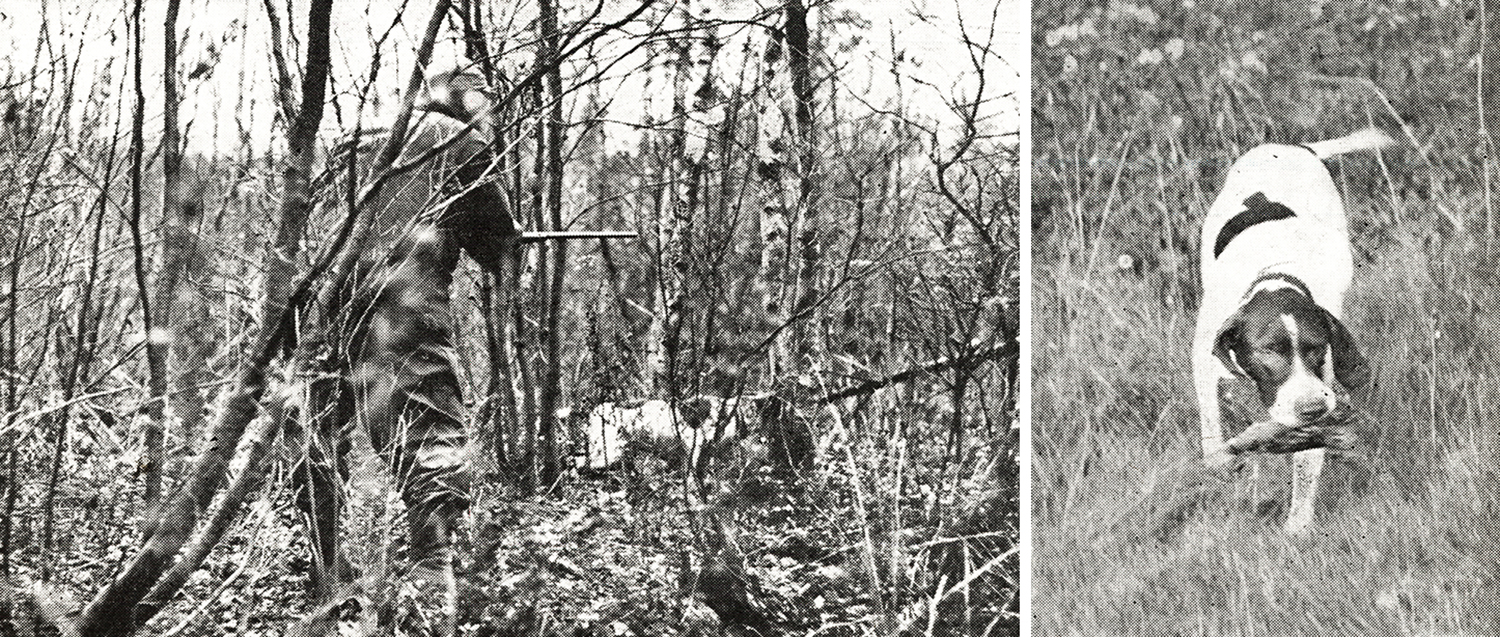
The reason it is so difficult to encounter flights during the short open season is that the birds, once they do start migrating, do not seem to stay in one place more than a day I’ve found a cover that was full of birds in the afternoon to be completely barren the next morning. When you do find them bunched that way—well, it is something to remember for a long time.
I should have known enough to go back to bed for another hour of sleep after looking out the window next morning. The ground was white with frost. But I hurried along, intent on getting to the airport soon after sunrise. I caught an early weather broadcast while driving in, and the announcer confirmed what I had been told the night before.
Today, he said, quoting a regional forecast, would be an Indian summer day, warm with clear skies and typical horizon haze. He explained, in great detail, that the northeast section of the country was in the center of a big high-pressure area which couldn’t fail to bring clear skies for the next two days.
WHEN I ARRIVED at the airport and looked at the plane, a Stinson Voyager, I cursed myself for being a thoughtless fool. It was covered with a quarter of an inch of hard, icelike frost! Why hadn’t I anticipated that when I saw the white blanket on the ground at home?
The plane was unflyable in that condition. The frost would not only create a terrific drag but it changed the camber, or shape, of the wings. The ailerons were rigid, and I couldn’t move the elevators. Furthermore, there was nothing I could do about it, but wait.
Ed showed up at seven o’clock, and we turned the ship around, tail to the east, so that when the sun had risen high enough, it would strike the frosted surfaces. When the icy coating began to melt, Ed helped the process along with a window brush.
I phoned Raymond and explained why I would be an hour late in arriving. I figured I could make Trenton in an hour since the winds-aloft chart indicated a 25-mile tail wind at 4,000 feet.
I pulled up into a cloudless sky at exactly 8 o’clock, circled the field, held the nose at 78 degrees, and started climbing across Casco Bay, leveling off at 4,000 feet over the Harpswell shore. The wind wasn’t quite on my tail, and I had to correct my compass heading to 74 degrees after making the next checkpoint, a highway and a small pond southeast of Bath.
It was one of those rare mornings when you didn’t need to fly with a chart in your lap to follow a strange course. Despite the weather forecast there was no haze and at the fifty-mile point I could see Cadillac Mountain, ten miles southeast of Trenton airport. The air was so smooth the plane would fly hands-off, and the temperature at 4,000 feet was noticeably warmer than it had been on the ground at Portland.
FIGURING GROUND SPEEED, I found that my estimate of arrival would be close. I was making almost 100 miles an hour at the halfway point and would pick up more relative speed from there on, since I had sacrificed about 15 miles an hour while climbing to 4,000 feet.
I wondered, as I passed Camden a couple miles to the south, if John and Curt were in the covers that morning. They were the ones who initiated me into the fraternity of timber-doodle chasers, years ago. I fell to thinking about Dime, John’s rangy pointer of those days, a big dog with the blood of the famous Frank strain predominant in his veins. John used to hang a small cowbell on Dime’s collar and when the bell stopped clanking it meant only one thing: there was a woodcock not far from the dog’s nose.
The course across Penobscot Bay took me over the southern end of Isleboro, almost over Lime Island where, as a high-school kid, I got my first taste of duck hunting and found it good. The island was then owned by my uncle, and I was a frequent visitor there each fall. I was on the ground at Trenton at 9 o’clock. Raymond and Arthur and Raymond’s pointers, Queen and Jack, were waiting. They were impatient to get started on what Raymond said was to be a demonstration for the city hunter. Arthur said he wanted to fly back with me that afternoon.
“Where are you taking me for this demonstration?” I wanted to know.
“What d’you care? You’re in no hurry,” Raymond countered.
“No, I’m in no hurry now, but I’ve got a 25-mile head wind at the moment, and it may be more than that before noon. I have to get back to Portland before sunset,” I explained.
“Want to hunt some of those half-acre covers tomorrow, I suppose,” my guide said.
We turned off the Bangor–Bar Harbor highway a few miles south of the airport, and ten minutes later Raymond drove the car off the road into a field. There was a mixed growth of alder and birch on both sides of the road.
“Take Jack into that corner, and I’ll go in the trail,” Raymond told Arthur as we crossed the field. “Hank, you stay outside,” he instructed me.
Raymond was hardly out of sight in the alders when Queen’s bell stopped tinkling. He spoke, telling me to watch out. He would flush the bird, but wouldn’t shoot. Giving me an easy one, I thought.
I heard the woodcock whistle before Raymond yelled, “Mark!” The bird climbed out of the cover, seemed to hang in the air a split second (which was when I should have taken the shot), then came straight toward me in a fluttering glide. I couldn’t shoot without the charge going into the cover, so I turned to take the shot going away. But the woodcock, typically unpredictable, sideslipped down to a gentle landing not ten yards from my feet.
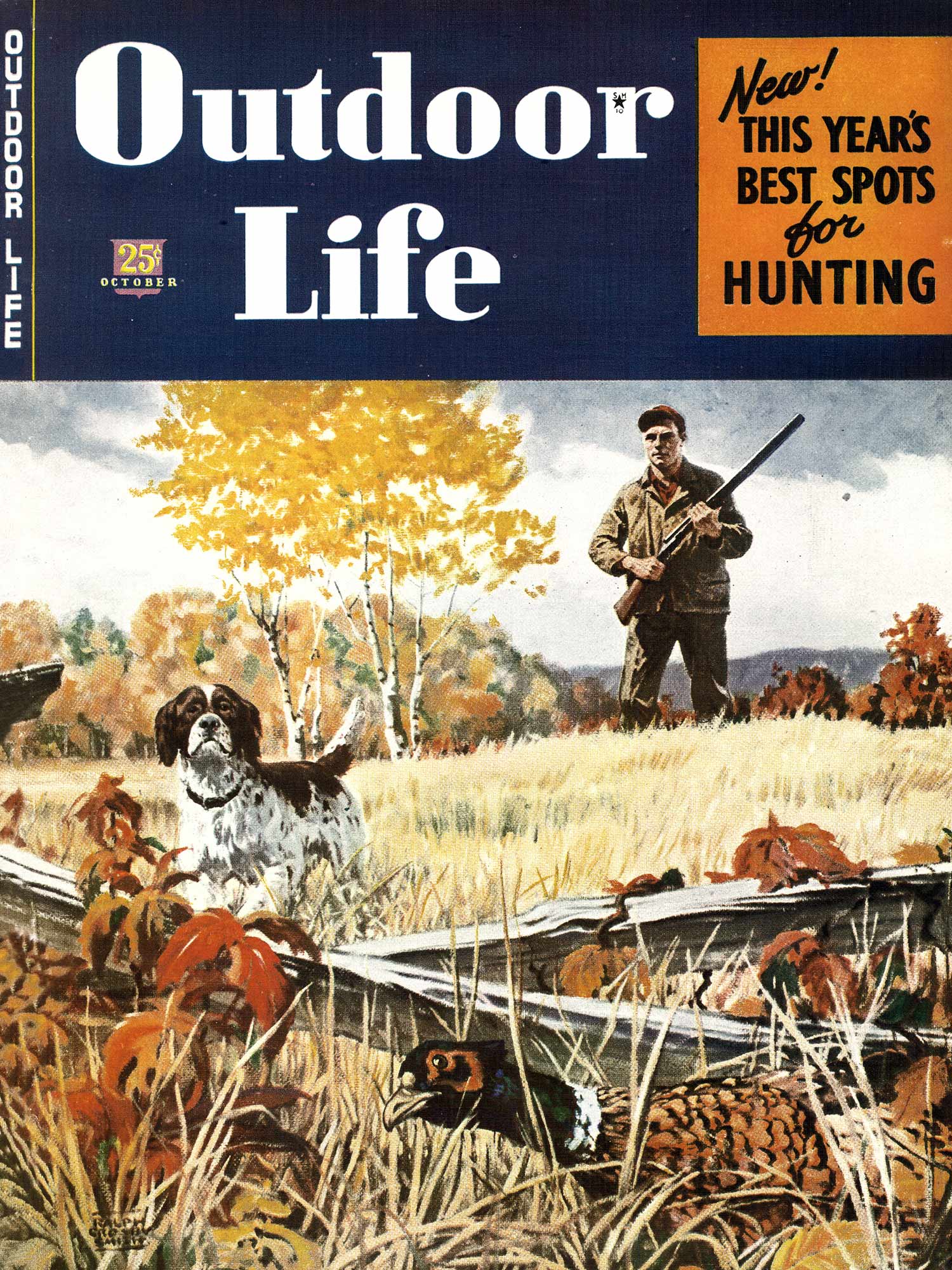
I knew better, of course, than to do what I did then, but the temptation, as always, was too strong. I took two steps, and the bird went away from there in a tightly banked turn about a foot above the ground. I missed with both barrels.
Queen came out at the shots, saw only me, a stranger, and went back into the alders. Then Raymond came out.
“Get both of them?” he inquired casually.
I looked at him a minute before confessing. “No,” I said. “I missed one—twice.”
“But two birds got up,” he insisted. “You better come in here with me. There’s a flight in this cover; the ground is peppered with fresh droppings.”
What happened during the next two hours convinced me, as Raymond had predicted, that I could learn something about woodcock shooting down East. There may have been twenty or fifty birds in that cover, I wouldn’t hazard a guess. All I know is that is that they were everywhere, sometimes four or five in an area no larger than a baseball diamond. Then the dogs would fan out and find a single, or a pair, or hit another bunch close together. It was the kind of woodcock shooting every veteran timber-doodle hunter stumbles onto once or twice in a lifetime, except that here there seemed to be no end to it, except the four-bird limit for each of us.
Raymond counted first after Queen pointed behind a scrub hemlock. Then I connected with one over her point in a clearing. Jack came up and honored Queen’s next point, and I missed, but Arthur got another bird which flushed at the same time. I got my second over and my third after Raymond kicked one out from under Queen’s nose in a miniature jungle.
Raymond’s next tally was a banded bird, the first either of us had ever killed.
“There,” he said, “is proof of a flight, if you need any.”
It was. We learned later that the bird was one of three banded the preceding spring some miles east of the cover where it was killed. While we were examining the banded bird, Arthur fired and a few minutes later shouted: “Bring the dogs over here, I’ve lost a bird.”
Neither Queen nor Jack liked to retrieve woodcock. Queen, however, would carry a bird gingerly, as though afraid of the long bill, if Raymond wasn’t around to pick it up when she pointed “dead.” But neither of the pointers could locate Arthur’s lost woodcock which he had flushed and shot without assistance from the dogs. We scoured the area without success until Arthur stepped up on a blow-down and yelled: “Come look at this!”
The dead bird was on the thick branch of a fir, six feet above the ground!
We shot and missed, shot and counted, until at 11:30, we had our limit of twelve and went back to the car to eat lunch.
The sky didn’t look good. The ceiling had changed from unlimited blue to heavily overcast gray, and it appeared to be dropping. I thought of what the radio annonucer had reported that morning and made a remark about weather forecasts in general. By 12:30, the sky began to look threatening, and I insisted that it was time for us to move toward the airport.
The Coast Guard weather observer at the field was giving 3,000 feet over Trenton, and the 12:30 teletype sequence showed 2,500 at Portland. The wind was from the southwest, which meant it would be almost on the nose going back, and the velocity was 20 miles an hour on the ground. Farther south, at Cape Cod, they had 34 miles an hour, an indication of what I might run into on the way back.
I didn’t tarry long over farewells. I had expected that Arthur would change his mind about going back with me, but he didn’t. He reasoned that I wanted to hunt woodcock again as badly as he did, and if I thought it was safe flying weather that was good enough for him.
We were off the ground at 1:30, climbing fast into the head wind. I held the plane down to 1,500 to Little Deer Isle, then took another 1,000 feet for the twenty miles across Penobscot Bay. It looked bad to the west, and my thoughts about weather forecasters were not complimentary. The ceiling was dropping, although the visibility remained fairly good. I figured we could make Rockland, anyway, and land at the naval base there, if necessary.
There may have been twenty or fifty birds in that cover, I wouldn’t hazard a guess. All I know is that is that they were everywhere.
It was no worse when we hit the coast but it still looked questionable in the direction of Portland. So I headed a little north of the course in order to stay over land all the way. Over Bath I knew I could make Brunswick, and over Brunswick I figured we had time to make Portland, or turn back to Brunswick, if the ceiling should drop much below 1,000 feet.
It did, and we came in over Casco Bay at 700, landing at Portland at 3:30, exactly two hours after leaving Trenton. It was just twice my time going down, but the average of an hour and a half for each leg wasn’t too bad. The round trip would have required seven or eight hours over the road.
“Think we should call Raymond and let him know we arrived safely?” I asked Arthur, after we had put the guns and birds in my car.
“What for? He won’t worry a minute about either one of us. He’s probably out looking for poachers by this time,” Arthur answered.
I was just finishing a late supper when the phone rang. It was Raymond.
“What time d’you get in?” he asked. “About 3:30,” I told him. “Why, were you worried?”
“Gosh, no, but a fellow just called me up.and said there was a big bunch of birds moving into a cover down in Sullivan. I thought maybe you’d like to come down and—”
I cut him short. “Yeah, I know—and learn something about woodcock shooting down East,” I finished. “Listen, mister, if this city hunter wasn’t convinced today, he’s too dumb to take another lesson tomorrow. And besides, Arthur wants me to show him a couple half-acre covers in the morning.”
This story originally ran in the October 1946 issue as “Winging for Woodcock.” Read more OL+ stories.
